Last week I was talking with several colleagues about the elements of successful small group instruction. We started chatting about the core curriculum, determining skill based groups, materials for use during small groups and on and on. We quickly, however, turned our focus to classroom management. The reality is is that if classroom management is lacking there really is no way to run small groups. Successful small group instruction is highly dependent upon having all the other children highly engaged and independent in their center activities. In order to make those precious minutes of small group intervention count within the classroom, your instructional time needs to be free of interruption. During this discussion, one of my collegues kept whispering “Harry Wong”. After a bit, I asked, “Who is Harry Wong?” at which there was a collective gasp from the others at the table. Within an hour after returning to my work area, Harry Wong’s book, “The First Days of School: How to Be an Effective Teacher” was placed on my desk.
By the end of the day, I managed to read over 100 pages of the book! It certainly is a must-read for any new teacher; however, the book contains tons of helpful hints and strategies for setting up and maintaining an effective classroom. My favorite chapter by far is Chapter 20: How to Have Students Follow Classroom Procedures. This chapter is particularly helpful when thinking about not only how to run your classroom, but how to set up and present your literacy centers to your students. Mr. Wong emphasizes the importance of establishing procedures in your classroom the first day of school. Setting procedures in the first days of school will impact your success in teaching and learning for the entire school year.
Click the following link to download this poster Student Achievement
So what procedures should be taught?
Think about maximizing time-on-task. Think about the non-instructional times during the school day and how much time they take away from instruction and learning. In order to increase time on task, it’s important to minimize the amount of time these activities take. In an early elementary classroom, here’s a list of common classroom activities that you will want to establish procedures for right away:
- Immediately gaining the attention of your students
- Entering the classroom (in the morning and during transition periods)
- Lining up and walking in line
- Having the students gain your attention
- Coming to and leaving the whole group area
- Transitioning from center to center
- Using the bathroom
- Leaving the classroom
How are procedures taught?
There are essentially three steps in establishing a procedure:
Click the following link to download this poster Steps for Teaching Procedures
I believe that many teachers understand the importance of establishing produres and do introduce the procedures to their students; however, if steps 2 and 3 are not implemented to the needed degree, then the procedures will likely not be successful. It’s not uncommon for a teacher attempt to gain the attention of the class by using a cue (e.g. “One, two, three, eyes on me”) and then have 4-5 students continue to talk as the teacher begins instruction and then minutes later have to discipline the chatty students. The rehearsal and reinforcement steps to establishing procedures is critical. Consistency with expectations of what is to occur with the procedure is also important.
Example of a procedure
One procedure that every classroom teacher must have in place is a procedure to immediately gain the attention of the students. We want students to be active learners and this means that we encourage movement and discussion; however, when it is time for the teacher to give a direction or deliver direct instruction, the students must immediately stop what they are doing and attend to the teacher. There are tons and tons of clever ways to gain the attention of the class. One quick and easy way is the “Give Me Five” method. This method was presented in the book; however, it’s a pretty common technique. Essentially, when the teacher wants to gain the attention of the students, he/she says “Give Me Five” and then counts down (5, 4, 3, 2, 1). By the time the teacher reaches “1”, the students are to have their eyes on the teacher, are quiet, still, have nothing in their hands are are ready to listen.
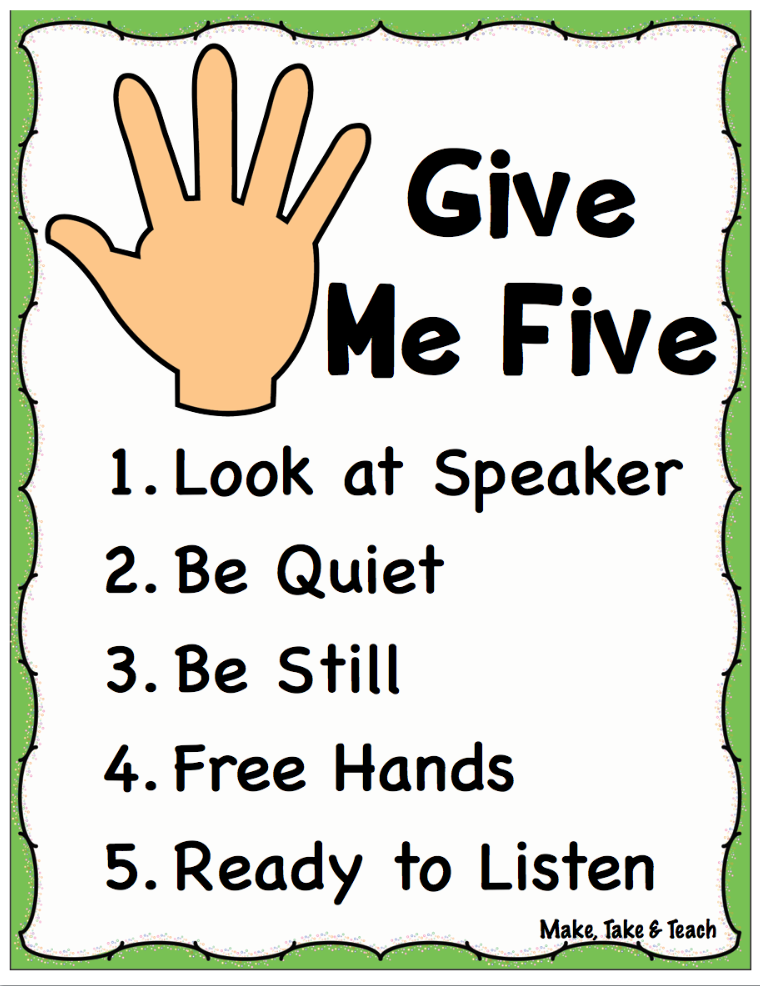 Click the following link to download this poster Give Me Five
Click the following link to download this poster Give Me Five
It sounds so simple, right? It is and it isn’t… just be prepared to practice and practice. It’s so much easier and efficient to put the time and effort on the front end then try to correct it later on.
Click the following link to download this poster For a child to learn…
So what about those literacy centers and small groups?
The ability to have 20 plus little first graders work independently and in small groups of their own as the teacher works with her/his own group of students requires spot-on classroom mangagement. Not only do those basic classroom procedures need to be established, but there also needs to be procedures for appropriate behavior and use of materials within the literacy centers themselves. One of my favorite resources for literacy centers is Debbie Diller’s Literacy Work Stations: Making Centers Work. In this book she provides information on how to introduce the centers to your students, what materials are appropriate, how to model the use of the materials as well as how to differentiate based on student need.
The bottom line is that in order for students to learn and grow, the classroom environment needs to be structured and orderly. This means that procedures need to be put in place and implemented consistently so that the students understand what is expected of them. If you are finding that your classroom isn’t running as smoothly as you’d like or if you think that you are correcting behavior often, think about the procedures that are put in place. Maybe there are too few? Maybe they need to be practiced? I’ll end with another quote from Harry Wong’s book which holds true.
Click the following link to download this poster An Effective Teacher Manages a Classroom
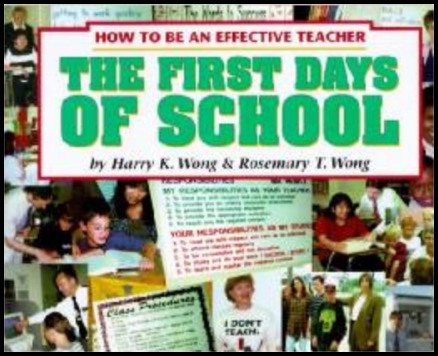
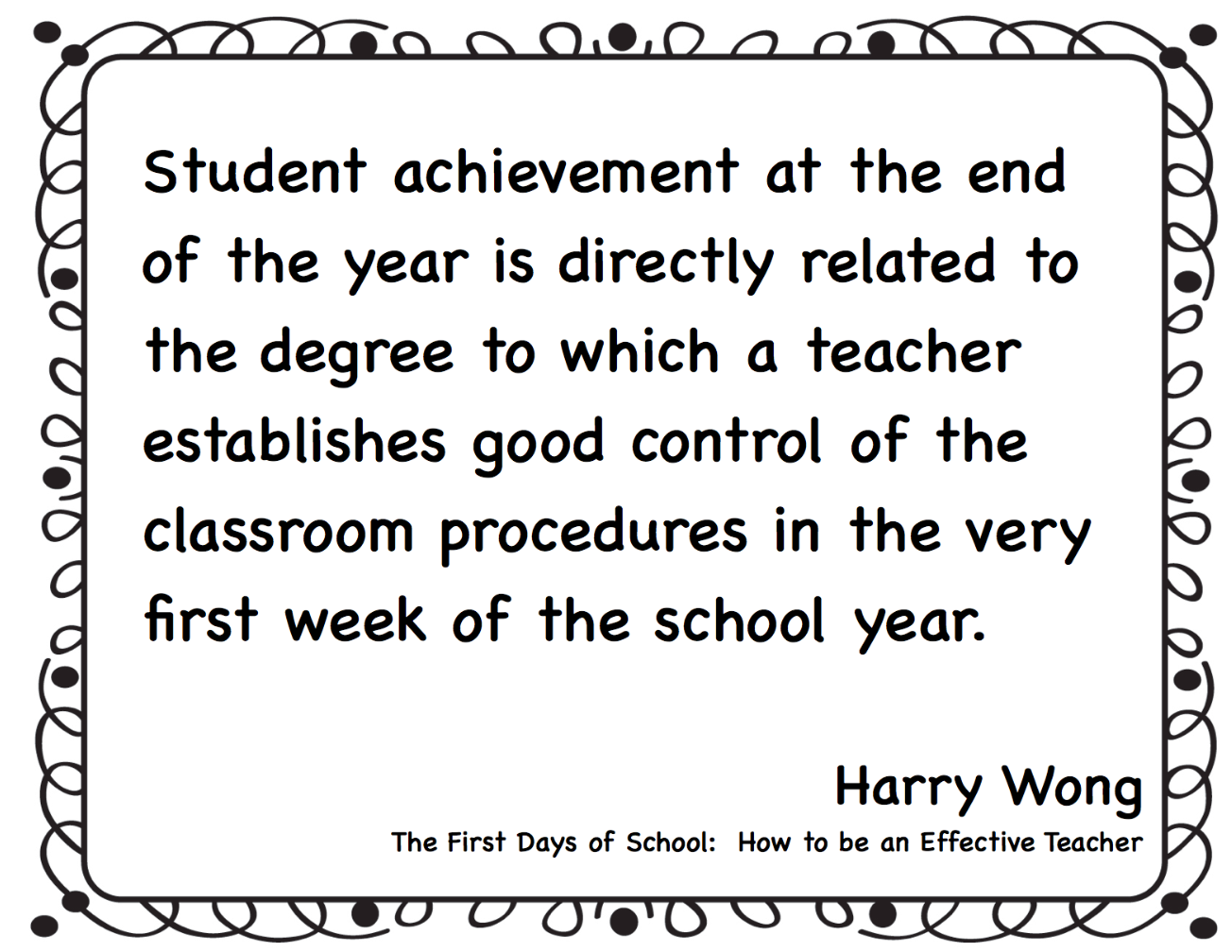


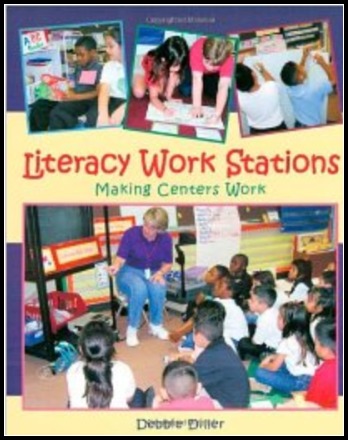
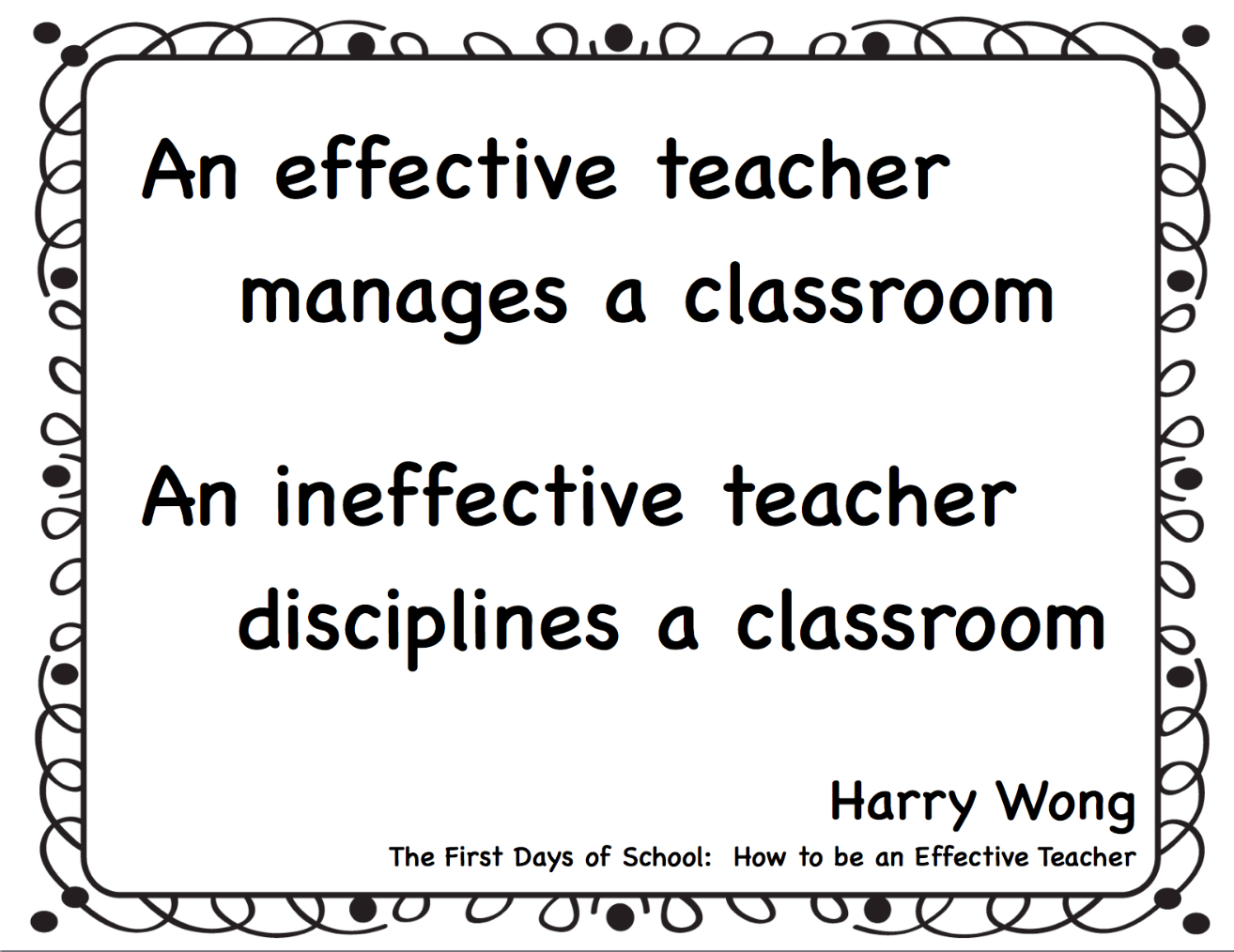



Leave a Reply